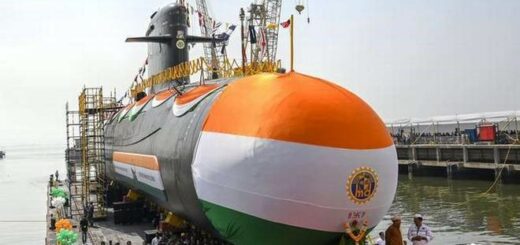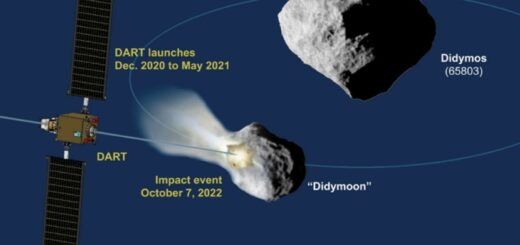National Current Affairs – UPSC/IAS Exams – 18th May 2019
International Day of Light
Topic: International Organisations
In News: May 16th, marks the global celebration of the second edition of the International Day of Light.
More on the Topic:
- The International Day of Light is an official observance of UNESCO that provides an annual focal point for the continued appreciation of light and the role it plays in science, culture and art, education, and sustainable development, and in fields as diverse as medicine, communications, and energy.
- The broad theme of light allows many different sectors of society worldwide to participate in activities that demonstrates how science, technology, art and culture can help achieve the goals of UNESCO – education, equality, and peace.
- All its natural benefits and its scientific and technological applications make light an essential part of the daily life of our societies; these benefits and applications make light an important issue for the Sustainable Development Goals of the 2030 Agenda for Sustainable Development.
- Over 300 events are scheduled to take place in 60 countries worldwide, bringing together an international community of scientists, students and the public.
Source: The Hindu
Sasakawa Award for Disaster Risk Reduction
Topic: Disaster Management
In News: United Nations Office for Disaster Risk Reduction (UNDRR) conferred Sasakawa Award 2019 for Disaster Risk Reduction to Dr. Pramod Kumar Mishra, Additional Principal Secretary to Prime Minister of India.
More on the Topic:
- Mishra was awarded for his concentrated efforts and dedication towards serving the communities that are most exposed to disasters.
- He has selflessly worked to the cause of social inclusion to reduce inequality and poverty, ultimately benefitting the socially and economically marginalized in the country.
About Sasakawa Award:
- The United Nations Sasakawa Award for Disaster Reduction is awarded to an individual or institutions that have taken active efforts in reducing disaster risk in their communities and advocates for disaster risk reduction.
- UNISDR is the administrator of the UN Sasakawa Award for Disaster Reduction.
About UNSIDR:
- The United Nations Office for Disaster Risk Reduction (UNDRR) was created in December 1999 to ensure the implementation of the International Strategy for Disaster Reduction.
- UNDRR (formerly UNISDR) is part of the United Nations Secretariat and it supports the implementation & review of the Sendai Framework for Disaster Risk Reduction adopted by the Third UN World Conference on Disaster Risk Reduction on 18 March 2015 in Sendai, Japan.
- The Sendai Framework is a 15-year voluntary people-centred approach to disaster risk reduction, succeeding the 2005-2015 framework.
- UNDRR’s vision is anchored on the four priorities for action set out in the Sendai Framework.
- UNDRR coordinates international efforts in Disaster Risk Reduction (DRR) and it reports on the implementation of the Sendai Framework for Disaster Risk Reduction. It convenes the biennial Global Platform on Disaster Risk Reduction
Source: The Hindu
Plantation of Rudraksh Trees
Topic: Environment and Ecology
In News: To create a greener ecosystem in Ganga Basin National Mission for Clean Ganga has signed a Memorandum of Understanding (MoU) with HCL Foundation and INTACH. Its objective is to undertaking project of Plantation of Rudraksh Trees in Uttrakhand. It is a CSR initiative under Namani Gange Programme.
More on the topic:
- Project aims at planting 10,000 Rudraksh trees in the Ganga Basin area in Uttarakhand in association with the local community.
- This project will also address the issue of unemployment as locals will get work in this project.
- Namami Gange Mission project will give inclusive and sustainable solutions for a cleaner ecosystem along the stream of 97 towns and 4,465 villages on the Ganga stem.
About Rudraksh Tree:
- Elaeocarpus ganitrus or Rudraksh Tree is a large evergreen tree. It has broad-leaves whose seed is traditionally used for prayer beads in Hinduism and Buddhism.
- Seeds of this tree are known as Rudraksh and used in the making of organic jewellery or mala.
- Rudraksh tree develops the fruit in three to four years. It is mainly found in Gangetic plain, foothills of Himalyas, Nepal, Indonesia etc.
About Indian National Trust for Art and Cultural Heritage:
- The Indian National Trust for Art and Cultural Heritage (INTACH) is a non-profit charitable organisation registered under the Societies’ Registration Act, 1860.
- In 2007, the United Nations awarded INTACH a special consultative status with United Nations Economic and Social Council.
- INTACH was founded in 1984 in New Delhi with the vision to create a membership organisation to stimulate and spearhead heritage awareness and conservation in India.
- Since 1984, INTACH has pioneered the conservation and protection of India’s natural and cultural heritage and is today the largest membership organisation in the country dedicated to conservation.
Source: The Hindu
National e-Vidhan Application (NeVA) Project
Topic: Polity and Governance
In News: The Kerala Legislative Assembly recently announced an initiative to digitize all its records and proceedings under its ambitious project called E-Vidhan.
More on the Topic:
- NeVA is an initiative of Ministry of Parliamentary Affairs. It aims to make all legislatures in the country paperless by making proceedings of houses digital.
- It also aims to provide information about functioning of House to common citizen at click of a button.
- It is a work-flow based app deployed in Cloud (Meghraj) which helps the Chair of the House to conduct the proceedings of the House smoothly and the members to carry out their duties in the House efficiently.
- NeVA is a member-centric, decentralised digital application that makes information available on digital platform about day to day functioning of legislative houses. It hosts secure page for each Member of House for submitting Questions and other Notices.
- It includes mobile applications (both on iOS and android platform) along with NeVA website which act as repository of data related to business of all Legislatures in the country in uniform manner.
- NeVA has been made live for Rajya Sabha in respect of Monsoon Session 2018 and information in respect of Lok Sabha is being updated.
- The user friendly app has made information on conduct of business in Legislatures accessible anytime, anywhere to everyone.
Source: Livemint
Breakthrough discovery recycles plastic from the inside out
Topic: Environment and Ecology
In News: A team of researchers at the U.S. Department of Energy’s (DOE) Lawrence Berkeley National Laboratory (Berkeley Lab) has designed a recyclable plastic that, like a Lego playset, can be disassembled into its constituent parts at the molecular level, and then reassembled into a different shape, texture, and color again and again without loss of performance or quality. The new material, called poly(diketoenamine), or PDK.
More on the Topic:
- All plastics, from water bottles to automobile parts, are made up of large molecules called polymers, which are composed of repeating units of shorter carbon-containing compounds called monomers.
- According to the researchers, the problem with many plastics is that the chemicals added to make them useful — such as fillers that make a plastic tough, or plasticizers that make a plastic flexible — are tightly bound to the monomers and stay in the plastic even after it’s been processed at a recycling plant.
- During processing at such plants, plastics with different chemical compositions — hard plastics, stretchy plastics, clear plastics, candy-colored plastics — are mixed together and ground into bits. When that hodgepodge of chopped-up plastics is melted to make a new material, it’s hard to predict which properties it will inherit from the original plastics.
- This inheritance of unknown and therefore unpredictable properties has prevented plastic from becoming what many consider the Holy Grail of recycling: a “circular” material whose original monomers can be recovered for reuse for as long as possible, or “upcycled” to make a new, higher quality product.
- So, when a reusable shopping bag made with recycled plastic gets threadbare with wear and tear, it can’t be upcycled or even recycled to make a new product. And once the bag has reached its end of life, it’s either incinerated to make heat, electricity, or fuel, or ends up in a landfill.
- The researchers want to divert plastics from landfills and the oceans by incentivizing the recovery and reuse of plastics, which could be possible with polymers formed from PDKs.
- Unlike conventional plastics, the monomers of PDK plastic could be recovered and freed from any compounded additives simply by dunking the material in a highly acidic solution. The acid helps to break the bonds between the monomers and separate them from the chemical additives that give plastic its look and feel.
- The researchers next plan to develop PDK plastics with a wide range of thermal and mechanical properties for applications as diverse as textiles, 3D printing, and foams. In addition, they are looking to expand the formulations by incorporating plant-based materials and other sustainable sources.
Source: Science Daily
Ishwar Chandra Vidyasagar
Topic: Modern Indian History
In News: The giant statue of Ishwar Chandra was recently vandalized by some political goons in Kolkata.
More on the Topic:
- One of Bengal’s towering cultural icons, and among the greatest personalities of the Bengal Renaissance, Vidyasagar was a polymath who reconstructed the modern Bengali alphabet and initiated pathbreaking reform in traditional upper caste Hindu society.
- He studied Sanskrit grammar, literature, Vedanta philosophy, logic, astronomy, and Hindu law for more than 12 years at Sanskrit College in Calcutta, and received the title of Vidyasagar Ocean of Learning at the age of just 21.
- Privately, he studied English literature and philosophy and was appointed principal of Sanskrit College on January 22, 1851. He was all of 31 years old then.
- The focus of his social reform was women and he spent his life’s energies trying to ensure an end to the practice of child marriage and initiate widow remarriage.
- He followed in the great reformist tradition of Raja Ram Mohun Roy (1772-1833), and argued, on the basis of scriptures and old commentaries, in favour of the remarriage of widows in the same way as Roy did for the abolition of Sati.
- His earliest effort at social reform, however, came in the second half of 1850 when, in a paper on the evils of child marriage.
- He launched a powerful attack on the practice of marrying off girls aged 10 or even younger, pointing to social, ethical, and hygiene issues, and rejecting the validity of the Dharma Shastras that advocated it.
- He showed that there was no prohibition on widows remarrying in the entire body of ‘Smriti’ literature (the Sutras and the Shastras).
- Alongside the campaign for widow remarriage, he campaigned against polygamy.
Source: The Hindu




















